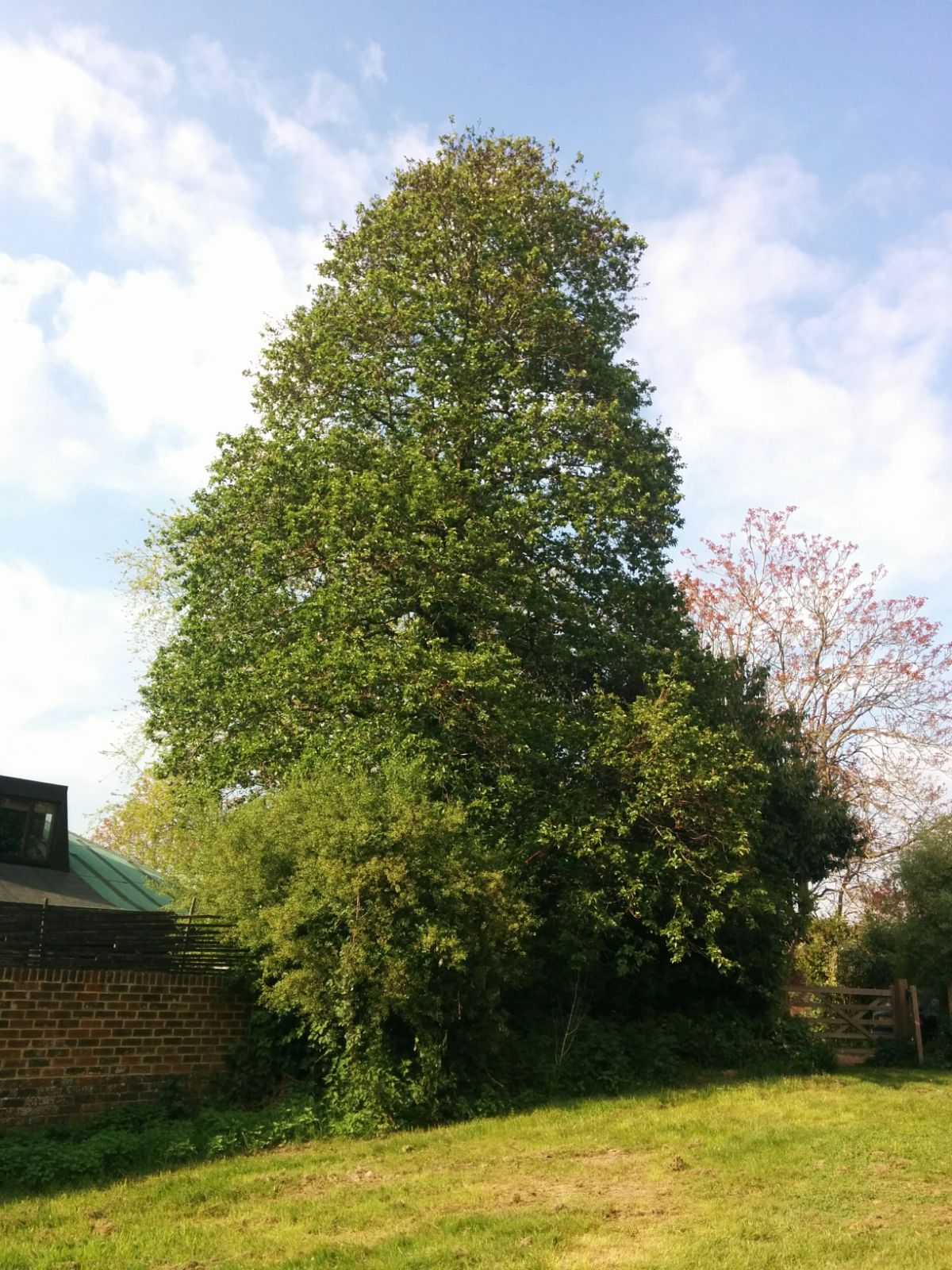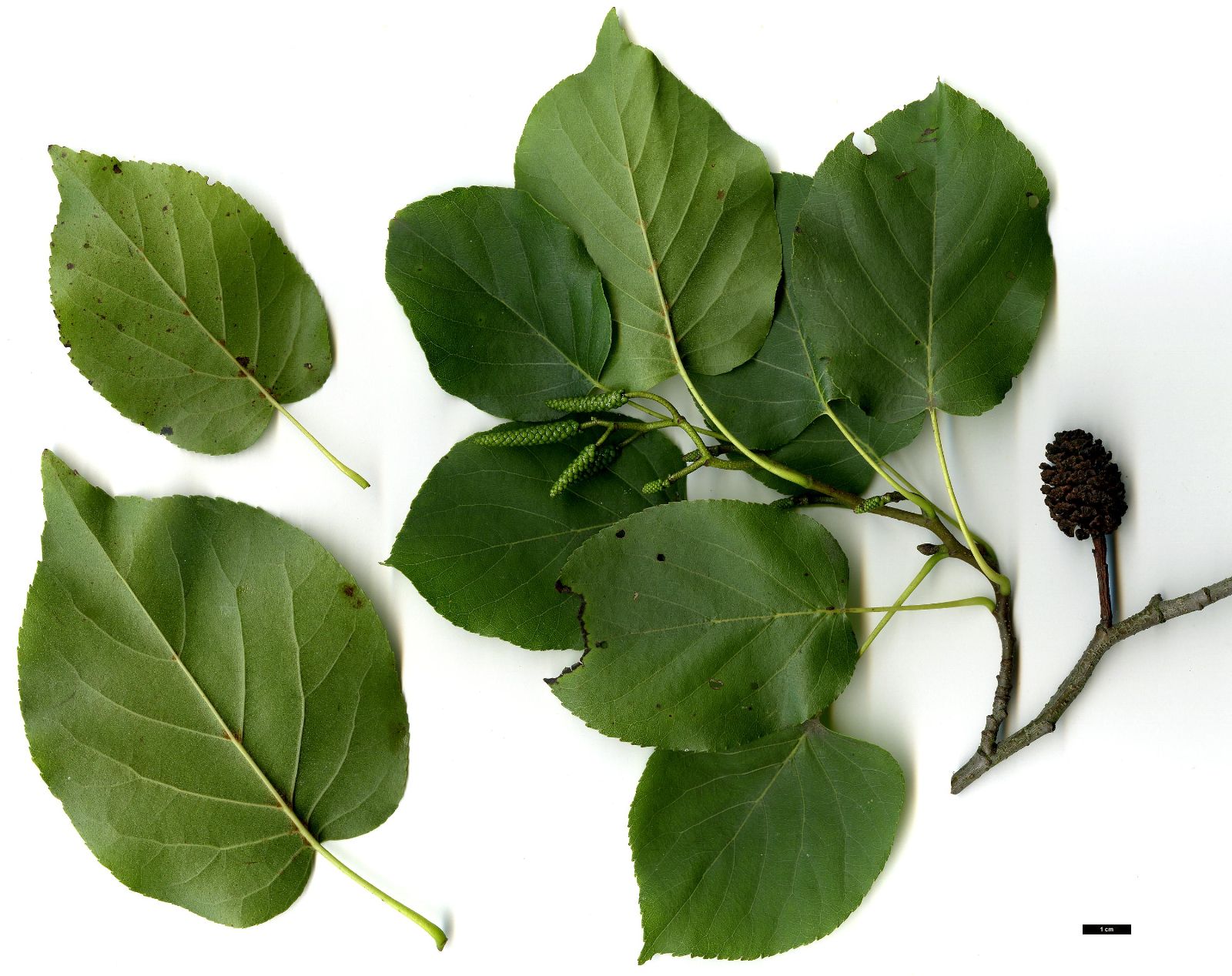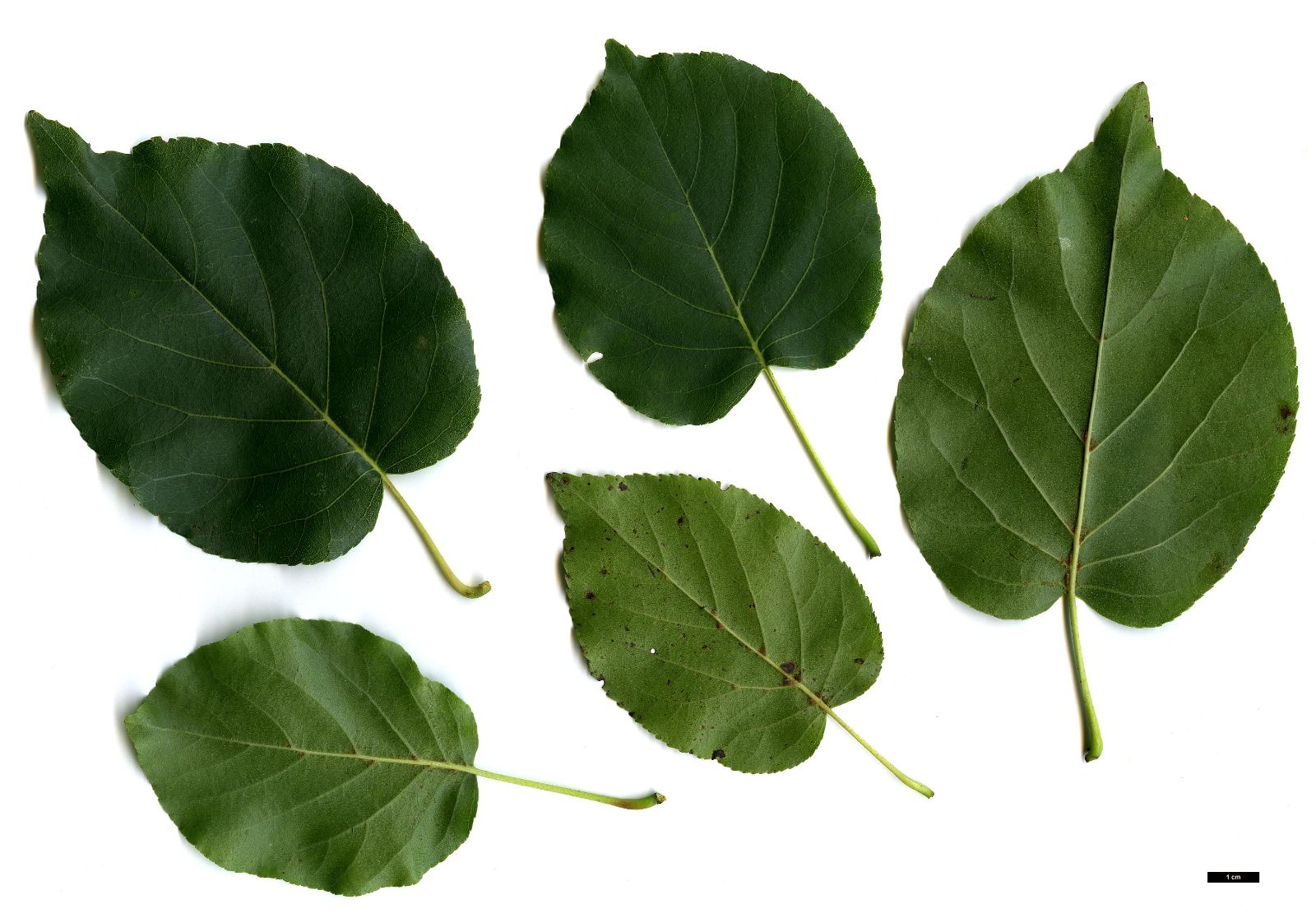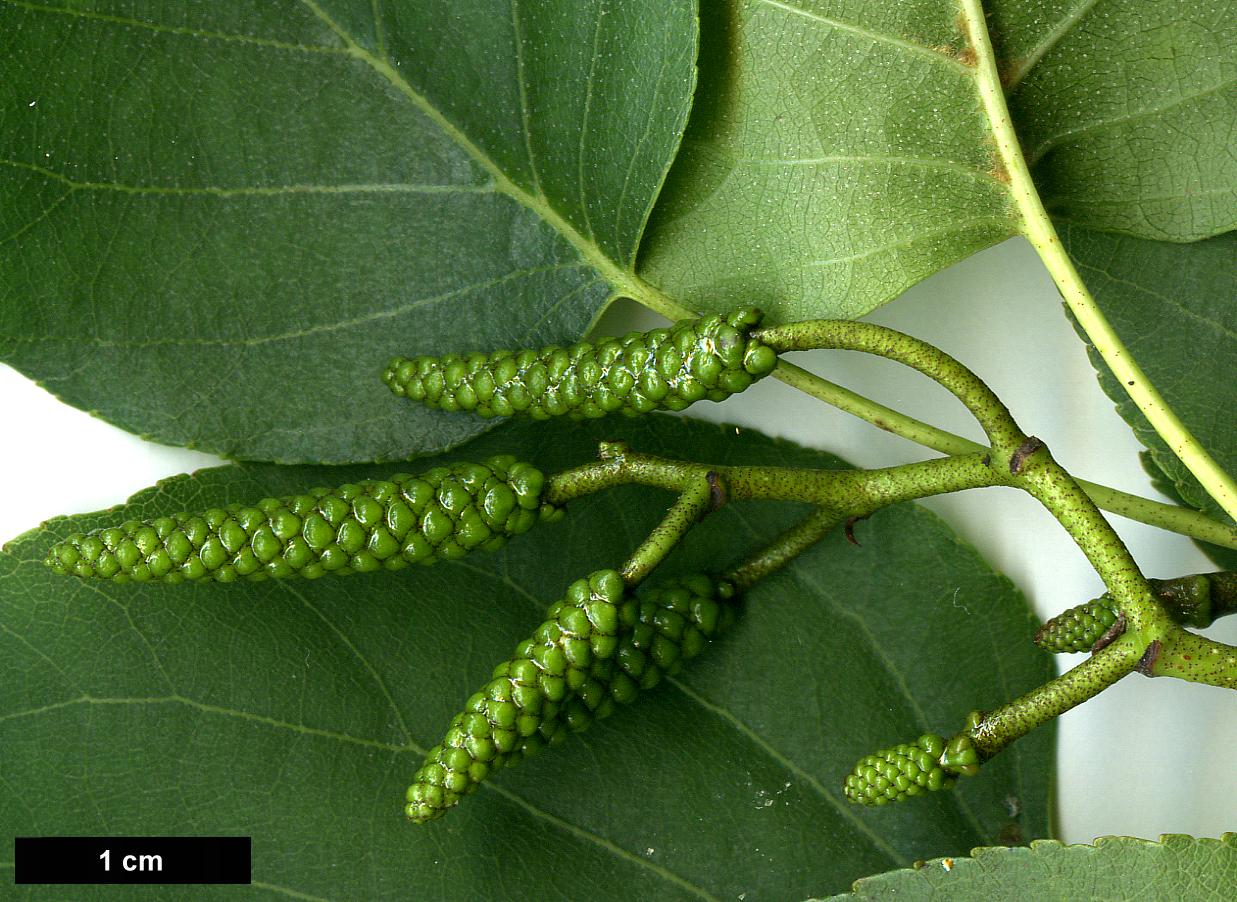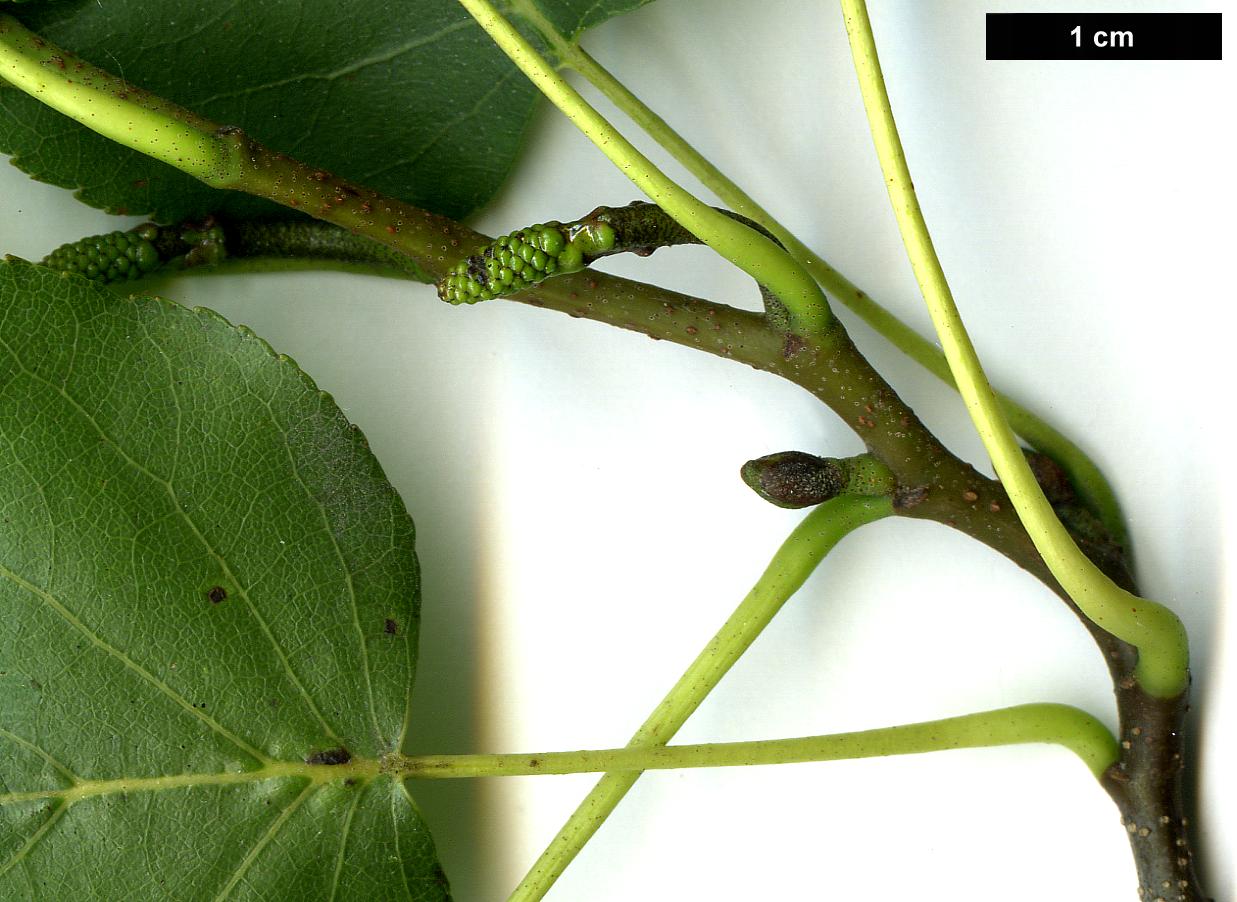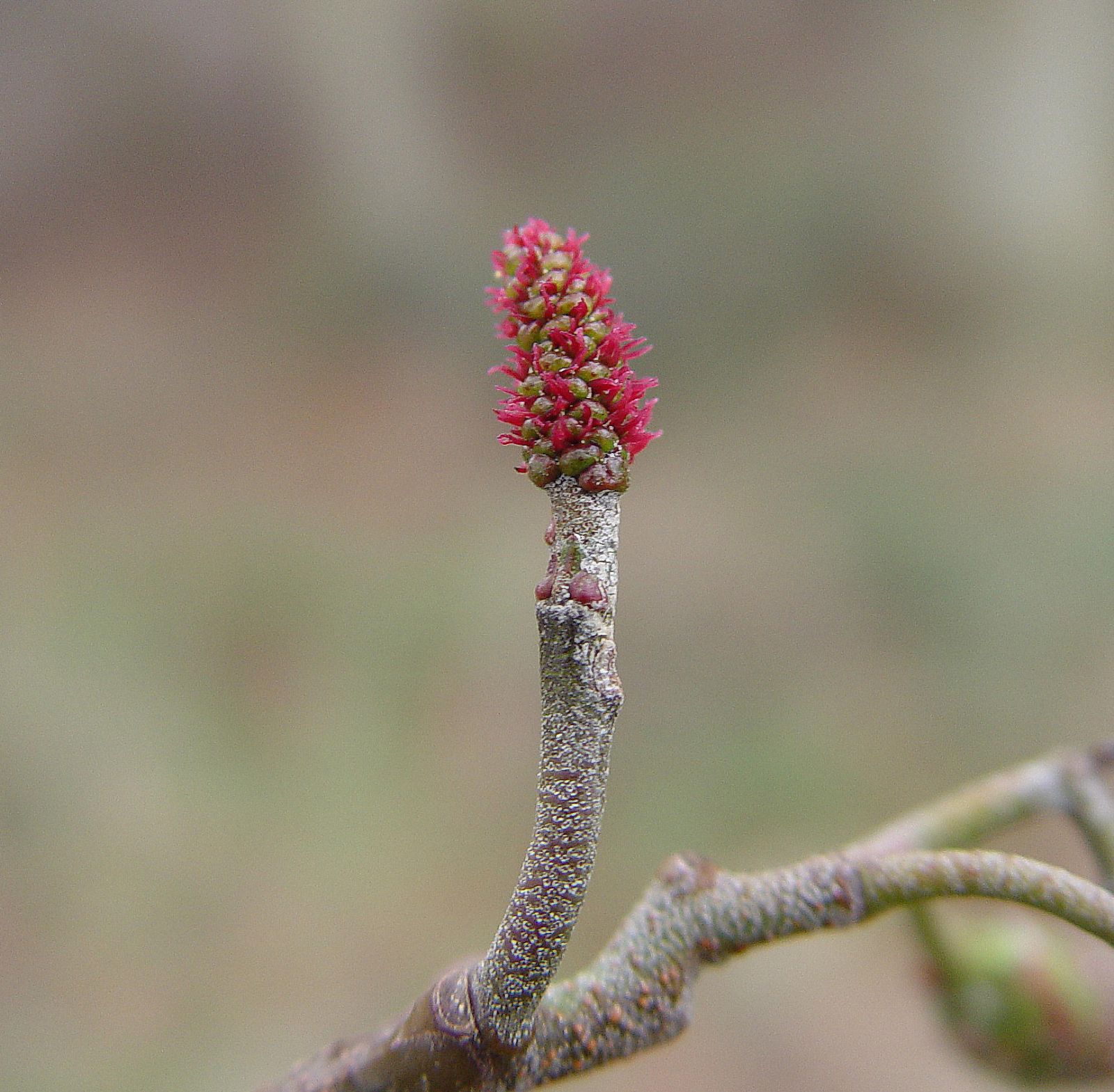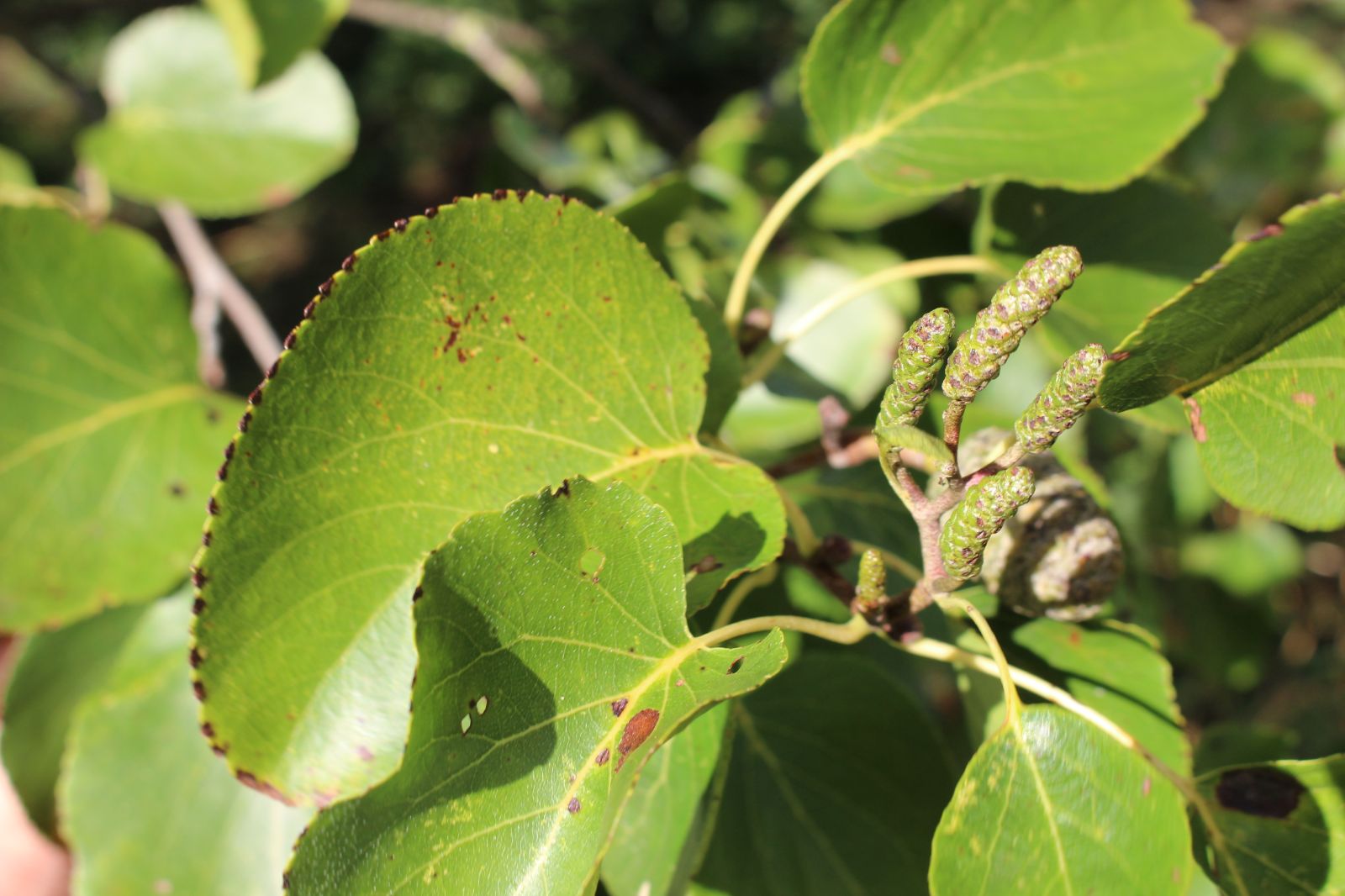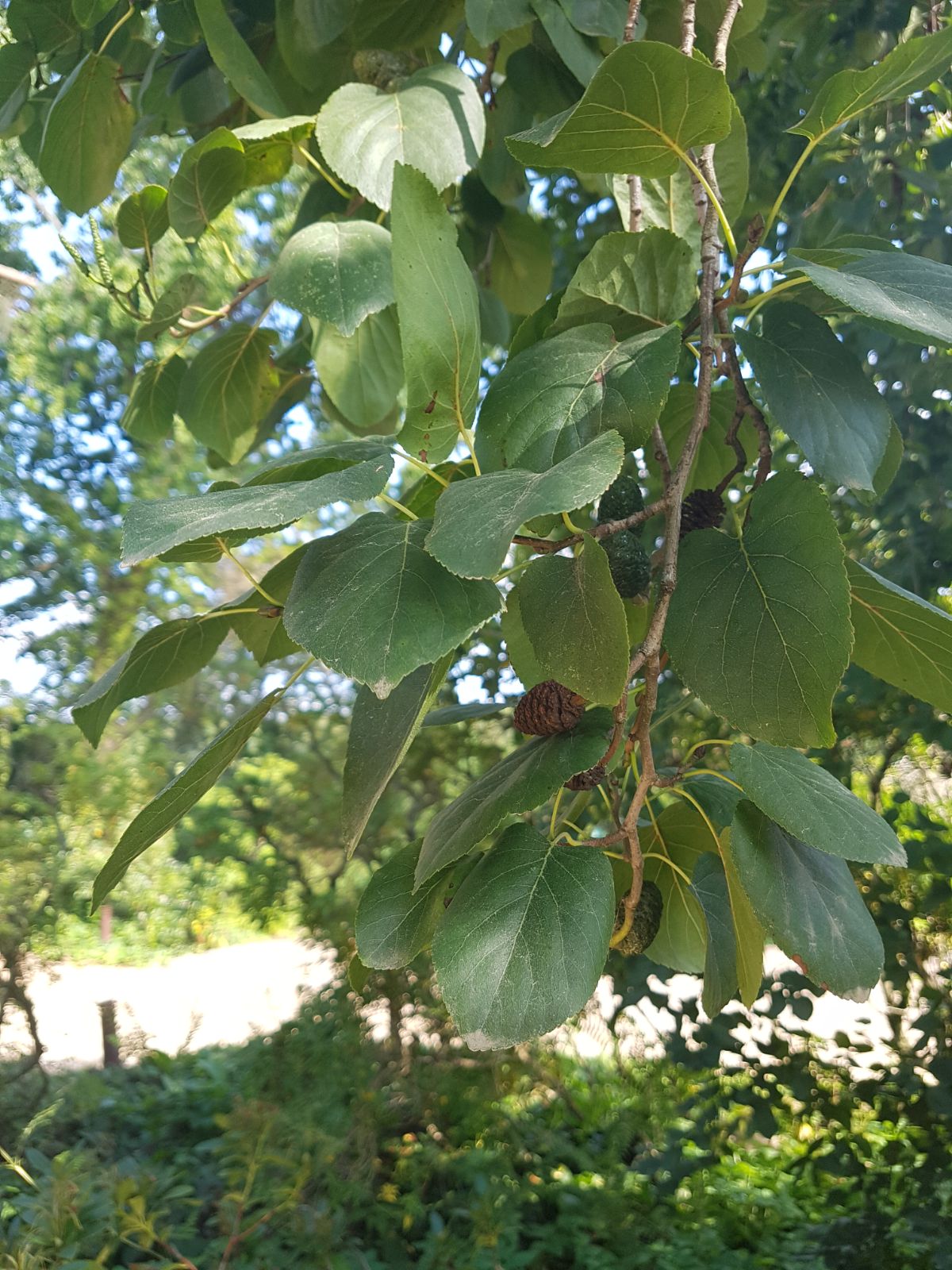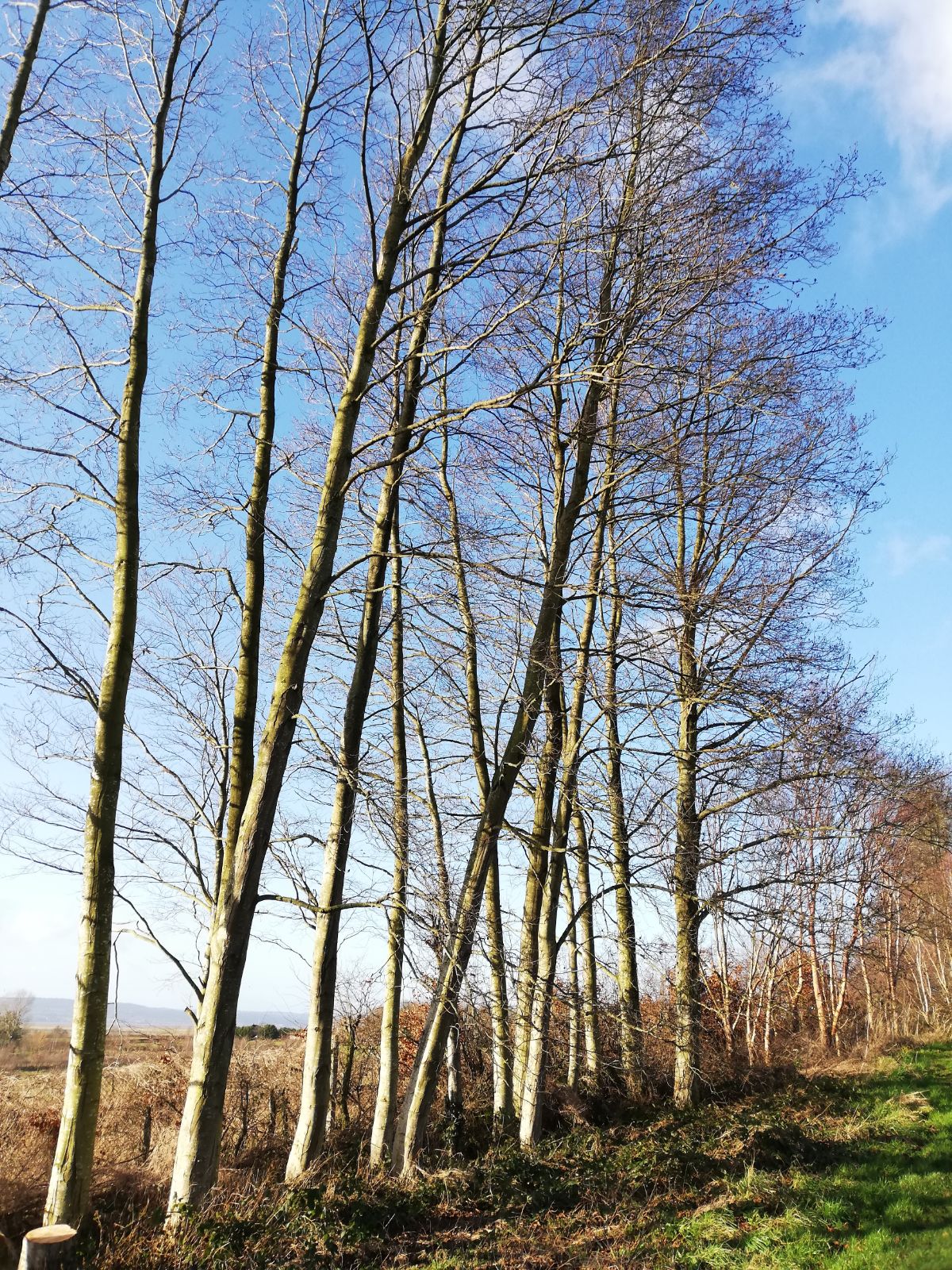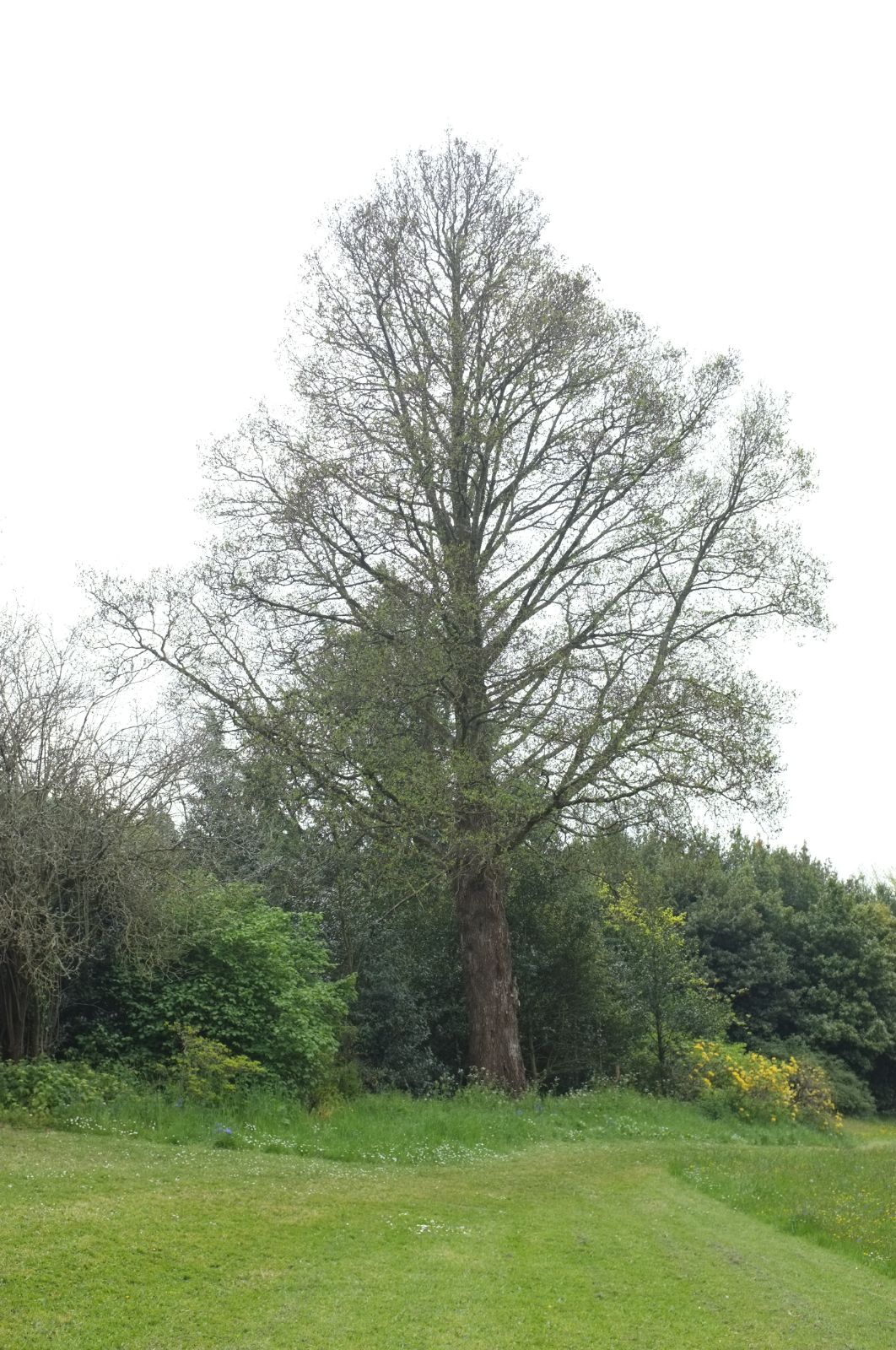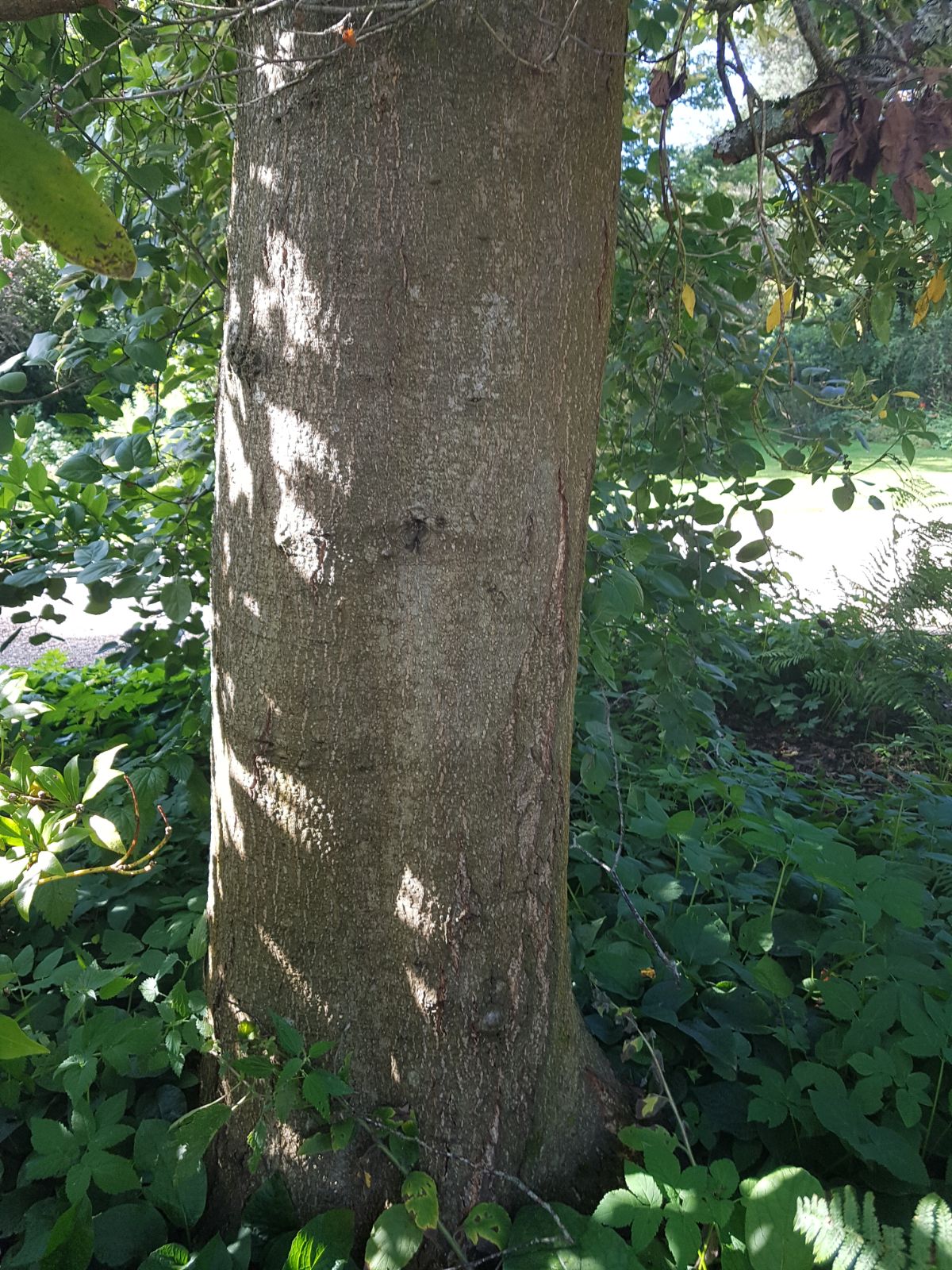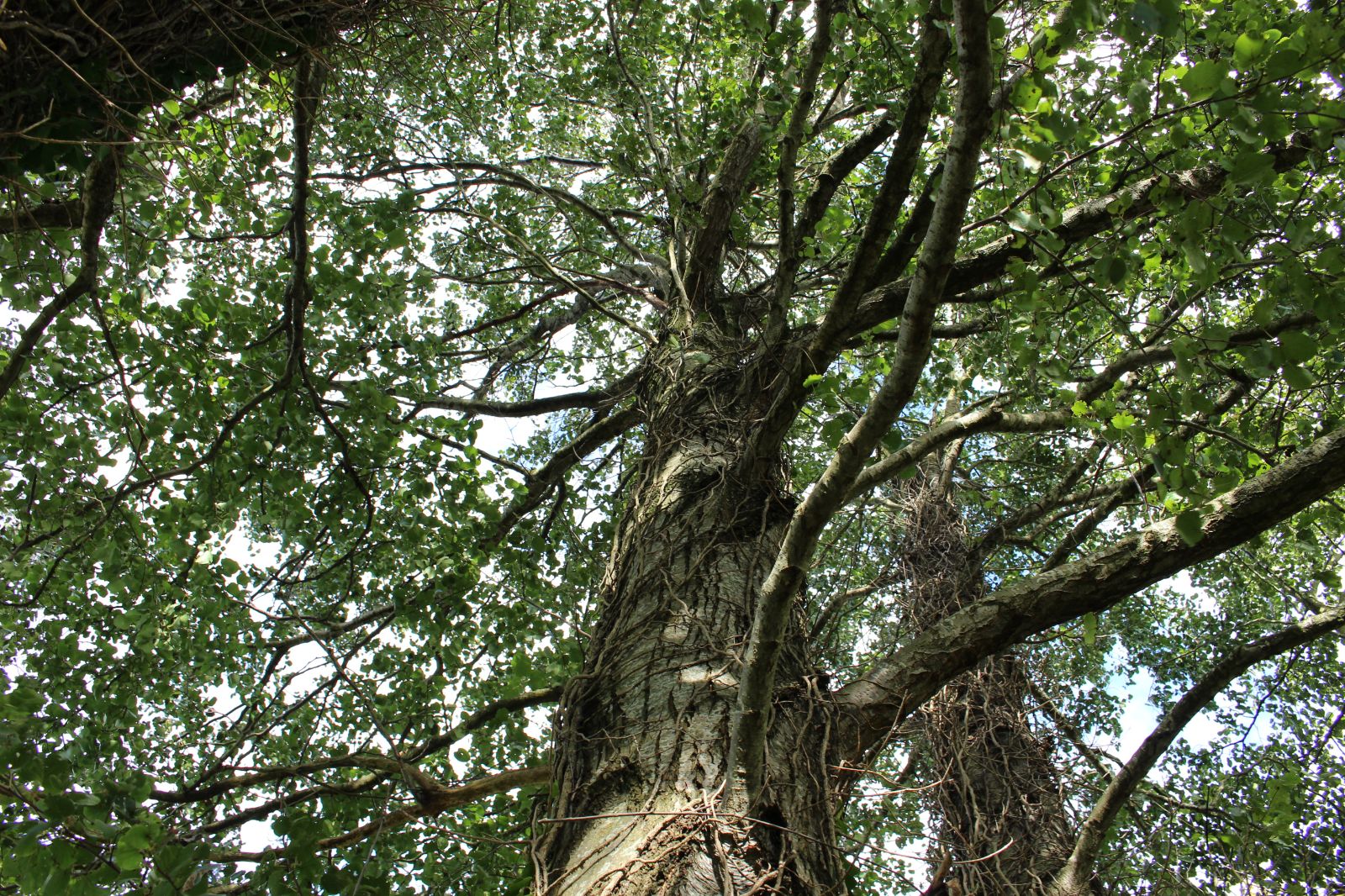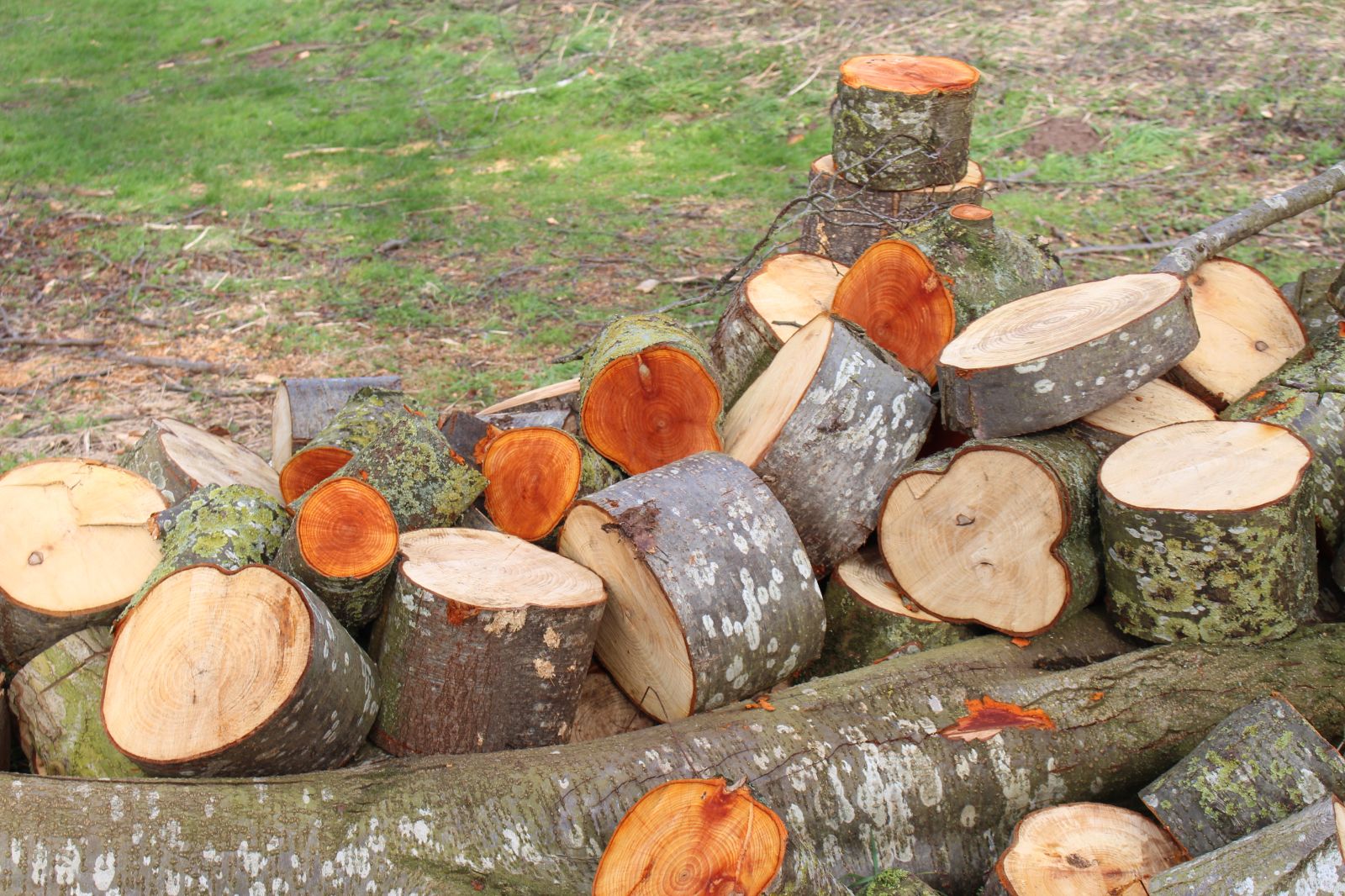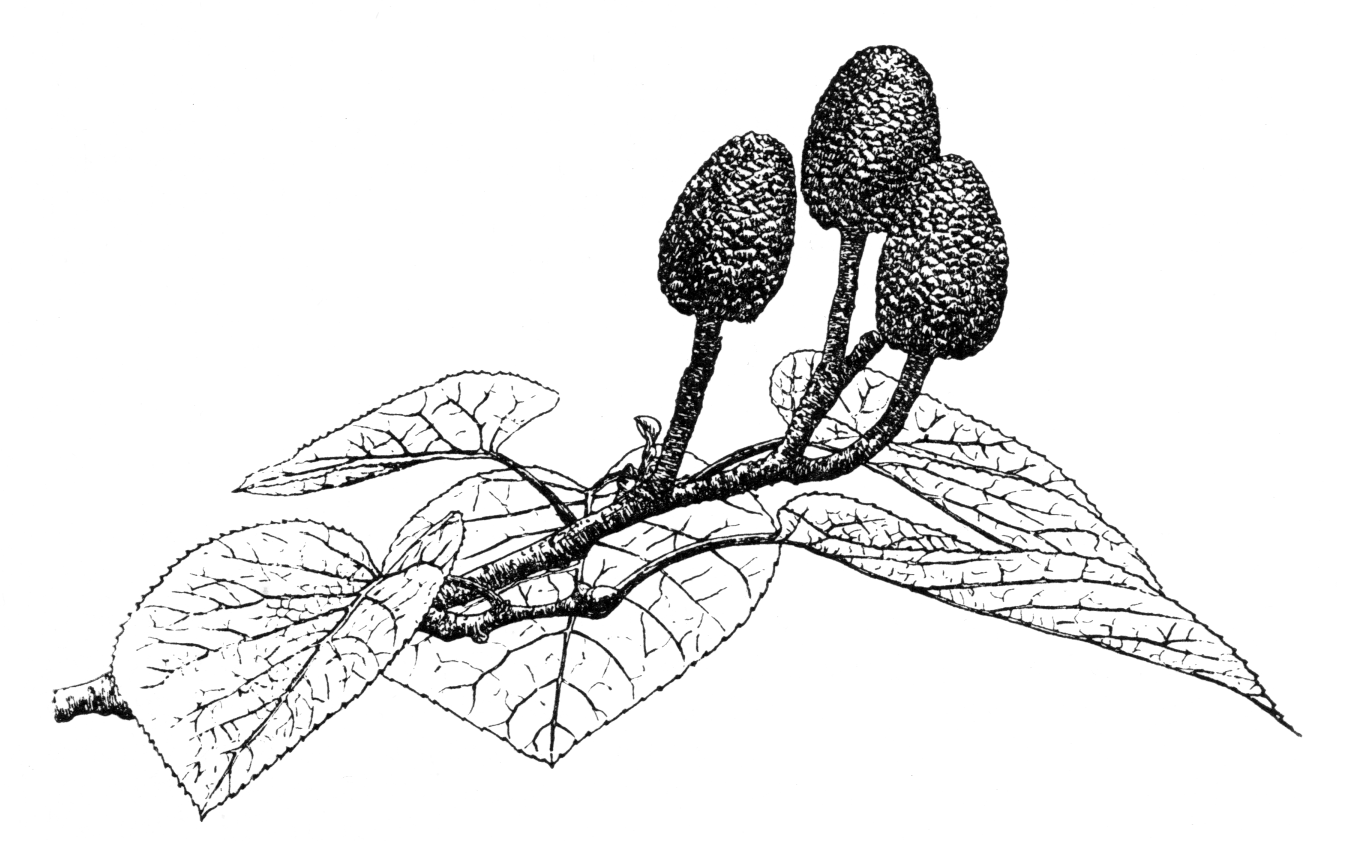Alnus cordata
Sponsor
Kindly sponsored by
a member of the International Dendrology Society
Credits
Tim Baxter & Hugh A. McAllister (2024)
Recommended citation
Baxter, T. & McAllister, H.A. (2024), 'Alnus cordata' from the website Trees and Shrubs Online (treesandshrubsonline.
Genus
- Alnus
- Subgen. Alnus, Sect. Japonicae
Common Names
- Italian Alder
- Neapolitan Alder
Synonyms
- Alnus cordata Desf. [Invalid]
- Alnus cordifolia Ten.
- Alnus macrocarpa Req. ex Nyman
- Alnus neopolitana Savi
- Alnus nervosus Dippel
- Betula cordata Loisel.
Infraspecifics
Other taxa in genus
- Alnus acuminata
- Alnus alnobetula
- Alnus betulifolia
- Alnus cremastogyne
- Alnus djavanshirii
- Alnus dolichocarpa
- Alnus × elliptica
- Alnus × fallacina
- Alnus fauriei
- Alnus ferdinandi-coburgii
- Alnus firma
- Alnus formosana
- Alnus glutinosa
- Alnus hirsuta
- Alnus incana
- Alnus inokumae
- Alnus japonica
- Alnus jorullensis
- Alnus lanata
- Alnus lusitanica
- Alnus maritima
- Alnus matsumurae
- Alnus × mayrii
- Alnus nepalensis
- Alnus nitida
- Alnus oblongifolia
- Alnus orientalis
- Alnus pendula
- Alnus rhombifolia
- Alnus rohlenae
- Alnus rubra
- Alnus serrulata
- Alnus serrulatoides
- Alnus sieboldiana
- Alnus 'Sipkes'
- Alnus × spaethii
- Alnus subcordata
- Alnus trabeculosa
Upright oval to broadly columnar tree to 20 m, with grey sometimes fluted trunks. Branches and twigs terete and silvery grey, viscid and usually glabrous or pubescent on young twigs. Buds short-stalked, two scales, brown, with winter buds with two deciduous scales. Petiole 2–4 cm, green, glabrous. Leaves leathery-glossy, 2–11 × 1.5–6 cm, ovate to elliptic or suborbicular, apex obtuse to shortly acuminate, truncate but typically cordate at base, teeth minute crenate forward pointing, glabrous or with hairy domatia in vein axils, semicraspedodromous with 6–8 lateral veins either side of midrib. Precocious. Female inflorescences solitary or up to three in a raceme, held on long (to 4 cm) erect scaly peduncles immediately below the terminal males, 5–10 × 3 mm, elliptic. Male inflorescences terminal in 3–6 pendulous raceme, 100 × 3–4 mm at anthesis. Fruit ovoid, 1.5–4 × 1–2 cm, scales tough, persistent, dark brown, striate, apex flat with 5 ± equal lobes, 4–5 mm. Nutlet narrowly winged, ± pentagon shaped, 3–4 mm. Flowers February to March. (Tutin et al. 1964, T. Baxter pers. obs.). Diploid, 2n=28 but triploid and tetraploid counts are known (Rice et al. 2015).
Distribution France Corsica Italy Campania, Basilicata and Calabria
Habitat Mediterranean sub-mountain and mountain belt on a range of soils including poor or degraded soils, often away from water and usually on calcareous substrate. A sun-loving to somewhat shade tolerant species given adequate rainfall. A colonising species, often found with Quercus cerris and Fagus sylvatica.
USDA Hardiness Zone 5-7
RHS Hardiness Rating H6
Awards AGM
Conservation status Least concern (LC)
Italian Alder is a distinctive species that quickly grows into a large, handsome, upright-conical tree. It has rather small, glossy, thick leaves, with typically cordate leaf bases and semicraspedodromous venation, and has large ovoid cones. It is most closely related to Caucasian Alder (Alnus subcordata) and relatives, and is separated by its smaller leaves, typically with cordate bases and shorter male catkins which appear in spring rather than over winter. Alnus japonica is also superficially similar but is distinct in having small ovoid buds, leaves with bases that are cuneate to truncate (never cordate), conduplicate in bud, and with much shorter male catkins. A. japonica is probably only distantly related despite Murai (1964) placing Italian Alder in Section Japonicae. This Section is likely to be a mixture of taxa which cannot straightforwardly be placed anywhere else. Italian Alder hybridises with A. glutinosa where the two grow together in the wild (Villani et al. 2021), giving rise to A. × elliptica.
Italian Alder is an exceedingly useful species – this is reflected in its wide availability in the nursery trade both for horticulture and forestry. It is drought tolerant, grows well in infertile soils, and is wind-firm, making it a useful species for urban forestry, wind breaks, soil improvement, agroforestry or land reclamation (Hirons & Sjöman 2019; CABI 2018). It should be widely grown, especially in urban areas, away from water containing Phytophthora alni. It is fast growing with a straight single trunk, with timber that stains red in sunlight. The timber is highly versatile and is used in a variety of ways, including for turning, carpentry, furniture, panelling, plywood and paper. The timber degrades rapidly when exposed to air or soil, but is more durable when immersed in water (Caudullo & Mauri 2016). It will freely self-seed in cultivation in full sun and is somewhat invasive in drier regions. The species appears to be somewhat resistant to Alder Leaf Beetle due to its thick leathery leaves (T. Baxter pers. obs.).
In horticulture this is a very ornamental species, and potentially a large tree. Bean called it ‘undoubtedly one of the handsomest of the alders’ (Bean 1976). Cultivated as an ornamental since the early 19th century, its many virtues include its ease of growth, large upright habit, and good foliage; it is also attractive in flower in early spring, but less so than A. subcordata which has much longer catkins. It is commonly planted as an amenity tree throughout suitable parts of Europe and North America, where it was in commerce by the 1850s (Jacobson 1996). There are many fine specimens in cultivation; the tallest on record was 31.5 m tall in 2016, growing at Stourhead, Wiltshire, UK. The tree with the largest recorded girth is at Sittingbourne Parish Church (Kent, UK; 3.46 m in 1999) (Tree Register 2021) which is larger than even the largest wild tree recorded by the website monumentaltrees.com (25 m × 3.32 m girth in 2020, at Piano Migliato in the municipality of Avellino, Campania, Italy) (monumentaltrees.com).
'Purpurea'
Alnus cordata ‘Purpurea’ was first introduced in 1927, from the Korník Arboretum, Poland. Its new growth is purplish-brown. It hasn’t been traced in commerce and may have been lost to cultivation (Jablonski 2018).

